Table of Contents Show
One of the hardest parts of shopping for an RV is settling on a floor plan.
Making a mistake at this stage of the process could set your entire experience up for disaster. Enjoying yourself can be very challenging if your rig isn’t compatible with your needs.
Today, we’re sharing valuable tips to help you select the right RV floor plan.
Let’s dive in!
The Basics of RV Floor Plans
Before you head to your local dealership and start shopping, it’s essential to understand a few things. For starters, not all RV floor plans are equal.
What works for one owner isn’t likely to work for another. You may enjoy camping in different places, have a larger family, or require different things from your camper.
The second thing you need to understand is that there are practically infinite floor plans. You can spend hours browsing through the websites of manufacturers and dealerships.
Typically, each new model year features some sort of change. As a result, you may need to consider older models if you’re looking for a specific feature.
Finally, it’s important to remember that the floor plan will look and feel larger in an empty RV. Sadly, once you settle into it, it’ll magically feel smaller. In these situations, some make the mistake of going smaller.
Lastly, Mother Nature isn’t always going to cooperate during your travels. There will come a time when you’re trapped inside due to the weather. Trust us, you’ll appreciate every inch of space you can get during these moments.
Pro Tip: Do you know all the RV types? If not, take a step back and read A Guide to Understanding The Different Types of RVs first.
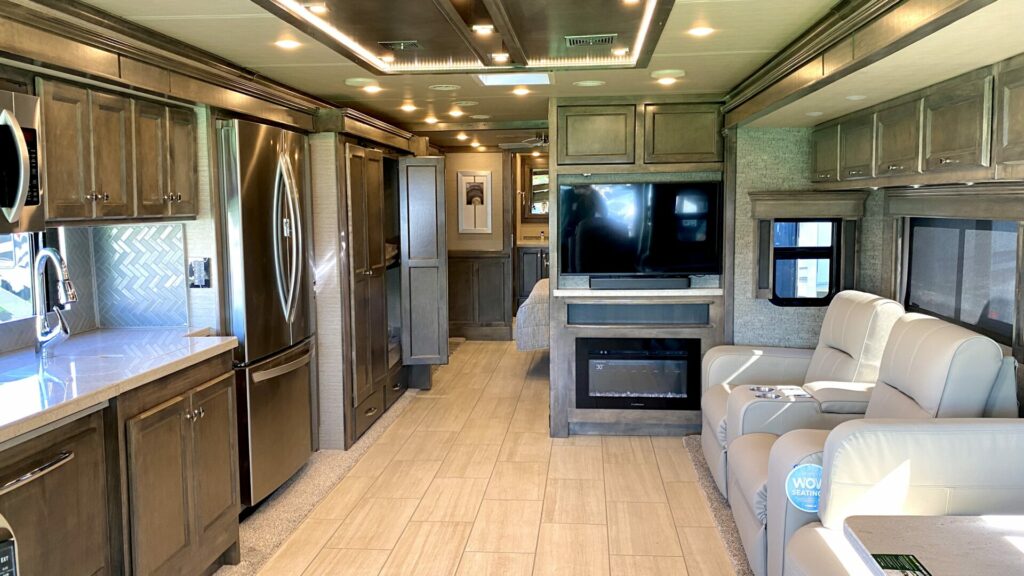
Things to Consider When Picking an RV Floor Plan
If you’re searching for the perfect RV floor plan, we’ve compiled a list of things to consider during the process. Thinking through these can help narrow your options and simplify the process.
Bunk rooms, outdoor kitchens, rear living areas, and multiple entry doors are just some of the choices that you will encounter. The decision you make here is critical as it can have a significant effect on the enjoyment of your camping trips.
Identify Your Needs and the Purpose of Your Travels
Identifying your needs is one of the most critical steps in finding the best RV floor plan. List everything you think you’ll need in a camper to enjoy yourself.
For many, this will include weight, length, and hitching requirements. There’s no use in considering a massive toy hauler if you don’t have a truck to haul it and won’t be buying one.
Make sure to consider all the features you want in a rig, no matter how small. If an outside kitchen, large awning, or washer and dryer hookups are necessary, put them on the list.
However, it’s important to remember that these are the things that you need, not want, in a camper. If you consider some of these requirements a must-have, don’t look at RVs without them.
Additionally, the purpose of your trips can affect which floor plan you should choose when picking out an RV. Some folks are looking to get away and relax while spending as much time in nature as possible. They likely don’t need a massive rig with a big-screen TV and theater seating. A smaller trailer with a dinette that converts into a bed may work great.
Others like to use their RV as a way to transport their ATVs and other toys and a place to sleep after a fun day. If that sounds like you, then you should consider toy hauler models.
With an increase in remote work, many new RVers are hitting the road with full-time jobs. If this is you, then this means you will need to consider where you will be working in the RV. Do you want an office space already built in? Or do you want to customize your RV to create your own space?
Truly figuring out what you need and why you’re traveling will greatly help narrow down the type of RVs you should be looking for.

Consider Your Travel Style
The second thing you need to consider is your travel style. There’s a significant difference between what full-timers and recreational campers require in a camper.
If you’re going for short weekend trips, you may not need tons of storage, a spacious bathroom, or other odds and ends. However, these are features that full-timers often require.
How you use your camper will significantly determine what you need from an RV floor plan. Think about how you’ll use your trailer 95% of the time and purchase accordingly.
Many grandparents and families have purchased larger rigs to bring grandkids or friends. However, these happen so rarely that they’ve got so much wasted space or they paid too much.

Consider Who Is Coming Along
Not only is it essential to think about how many people are traveling, but you should also consider who will be tagging along. Do you have children? How old? Will you have visitors? What will everyone be doing every day?
An open-concept design will look and feel more spacious; however, it does tend to limit privacy. If you’re traveling with older kids or other adults, they will likely want their own space to relax and spend time.
You can find some models that include a bunk room with a door and even its own entry point from the outside. This can be an excellent option for teenagers or those entertaining friends for the weekend.
You also want everyone to be comfortable, so consider living space. Where will everyone be on rainy days? Does everyone have a seat at the table to eat?
When shopping for RVs, we recommend bringing everyone who will be traveling with you. That way, you get a feel for how crowded or spacious a particular RV feels.

Evaluate Sleeping Arrangements
After a long day of adventuring and exploring, everyone needs a place to sleep. If you have little kids, remember they’ll grow. Unfortunately, the bed and sleeping spaces in your RV will not.
As a result, you’ll want to ensure you have plenty of room for older kids and, eventually, teenagers.
Young children may be able to share a space now, but it can become a problem down the road. Failing to build in some additional space could mean you’re shopping for a new camper in a few years.
For some families, that’s okay; they know they will upgrade when children age. For others, they want to travel in the same rig, so it’s essential to plan accordingly.

Think About Bathroom Layout
If you’ve not spent much time looking at RVs yet, it may be hard to believe, but some models have multiple bathrooms. These can be very convenient, even though most campers are less than a few hundred square feet.
Some campers feature multiple entrances, one directly into the second bathroom. Rigs with these layouts are nice because they allow you to access the restroom easily without tracking dirt into your camper. If you’re a parent, these layouts can be a huge blessing.
Pro Tip: Here are 5 Reasons to Avoid an RV Wet Bath.

Consider Kitchen Features
One area that’s easy to overlook is the kitchen space. Preparing a meal in an RV kitchen can be highly challenging. It’s tiny, and the layout can be very awkward.
Cooking is part of the overall camping experience, but how often you cook inside your RV greatly impacts which floor plan is best for you. The refrigerators, stoves, and microwaves are typically smaller than in your home.
Giving up a few features during weekends or extended trips is not a big deal. However, it can be a significant deal if you plan to travel full-time. You’ll likely make most of your meals in this space and don’t want it to be constantly frustrating.
Thankfully, more RVs are coming out with residential-size refrigerators and ovens and, so full-time RVers don’t have to go without. Not only that but new layouts have increased counter space, allowed for larger pantries, and even have luxuries like a coffee bar area.
Lastly, grilling and cooking outside usually go hand in hand with camping. This is where the outdoor kitchen comes into play.
If you like to cook outside, then you should consider an RV with an outdoor kitchen. Having a sink, small refrigerator, and cooktop outside and easily accessible is a great feature for those RVers who consider themselves the camp chef!
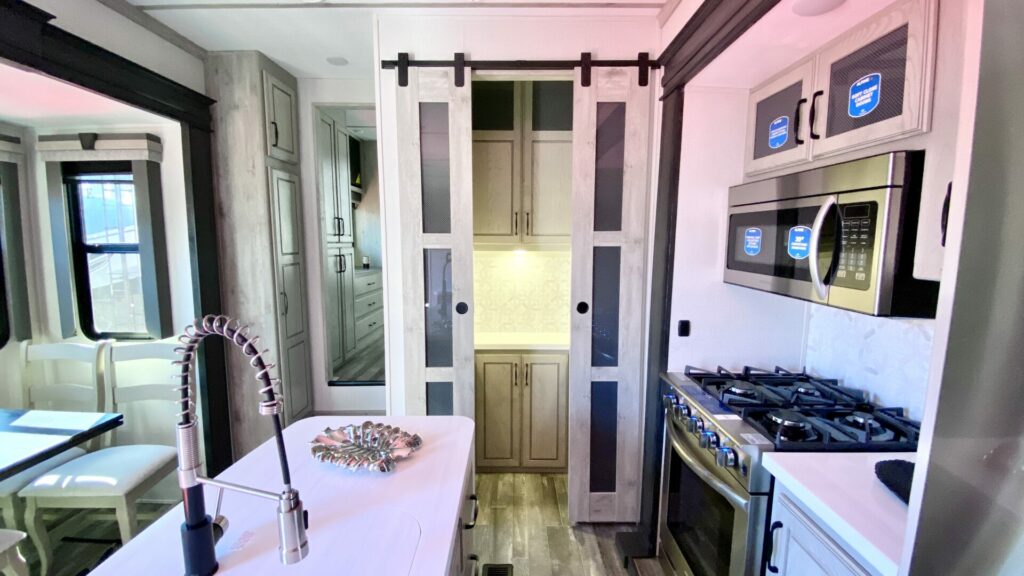
Understand Slide-Out Options
Manufacturers love using slide-outs to maximize space. Adding a few slides to an RV’s layout can open up the rooms and create a spacious feeling. On the other hand, the placement of these spaces is essential.
Consider the available areas with the slides closed when looking at the floor plan. Accessing bedrooms, bathrooms, and your refrigerator with the slides in can be a huge bonus.
This can allow you to get food from your fridge, use your restroom, and climb into bed for a nap without pulling out your slides. It’s also great when overnight parking at Walmart, Cracker Barrel, and other places where it’s rude to use your slide-outs.
Pro Tip: You might not even want slides after reading What Are the Downsides of RV Slide Outs?
Assess Storage Capacity
The available storage is another major thing to consider when picking an RV floor plan. Whether you’re traveling full-time or recreationally, you’ll have stuff you want to bring with you.
As we said earlier, these spaces can quickly disappear once you start moving in your stuff.
We’ve seen some rigs that have very little usable storage space. This can make it challenging to bring gear and equipment with you. Additionally, it can also make it difficult to stay organized. While you may be unable to bring everything, having some room is essential.
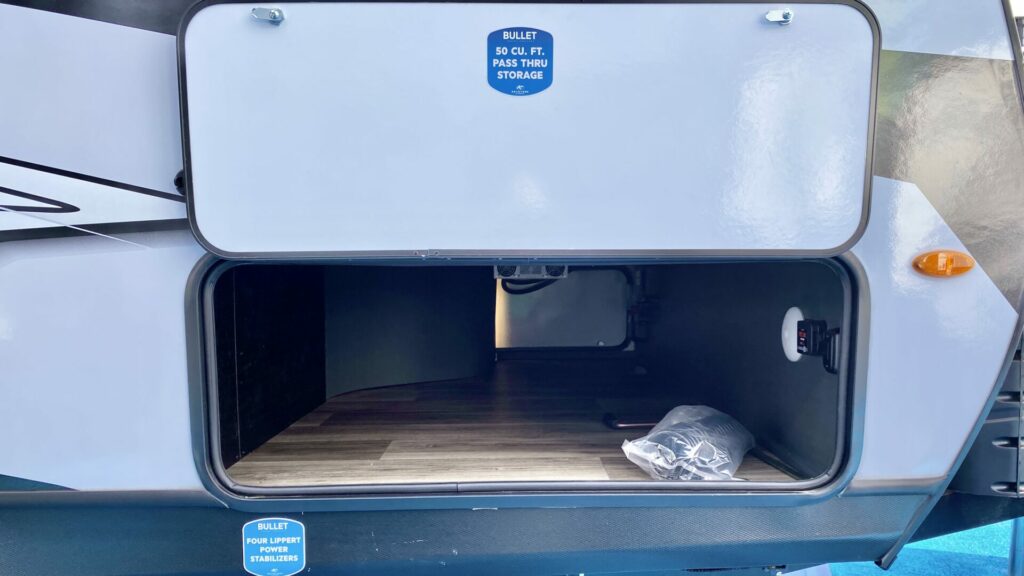
Get Hands-On Experience With Different RV Floor Plans You Like
Now that you know what you should be thinking about, it’s time to start touring RVs. Make sure you’ve created a list of your must-haves and nice-to-haves for the RV salesman and head to your local dealership.
If possible, attend an RV show. There will be many units on display, and they are typically all plugged up so that you can see what they would be like when in use.
Once you start walking through RVs, be sure to test how they feel. Sit on the toilet, stand at the sink and pretend to do dishes, lay in the bed, stand in the shower, and have your kids climb in and out of their beds. Make sure to see the layout with the slides closed. Getting a feel for the space is a good way to determine if it feels right for your needs.
Pro Tip: When you’re ready to make your purchase, make sure you read 5 Best Times to Buy an RV!
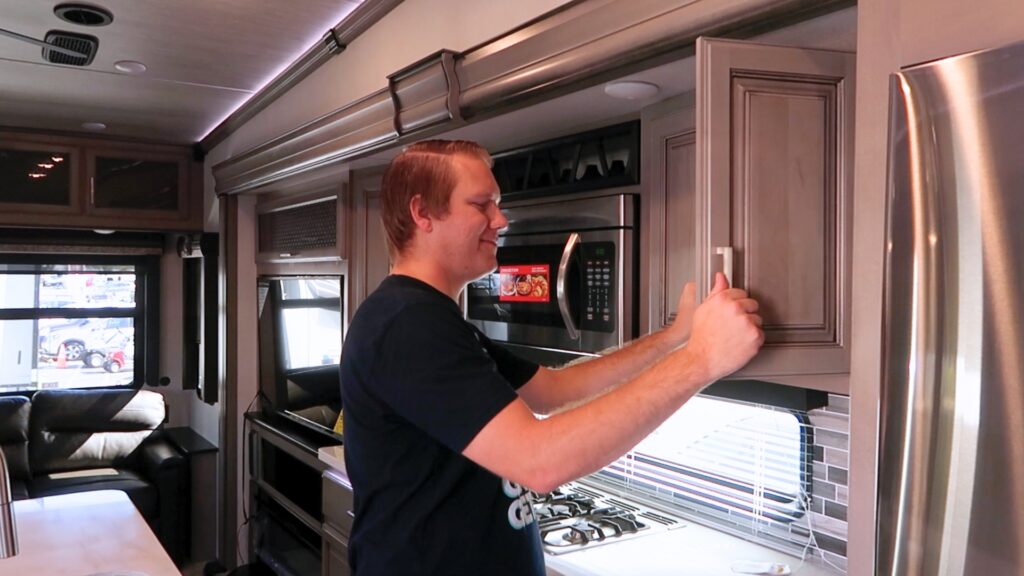
Find the Perfect RV Floor Plan for You
Finding the perfect RV floor plan for you can take time and effort. You’ll have to sift through many duds to find the needle in a haystack.
However, buying a camper is a significant investment and not a decision you can rush. Walk through as many campers as possible to get a feel for what you want and need in a camper floor plan.
What other tips have you found useful to help narrow down your RV search?




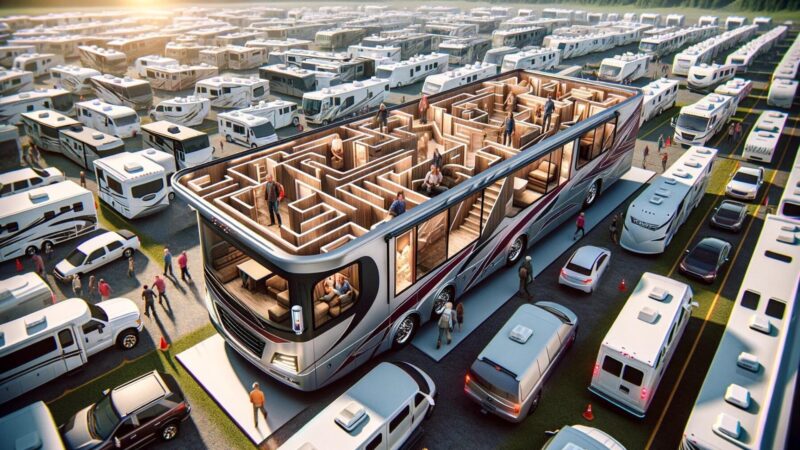


Great article guys and perfect timing for us. We are in the final stages of FT launch!